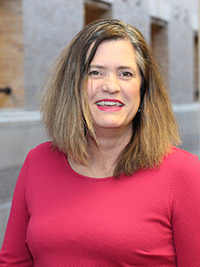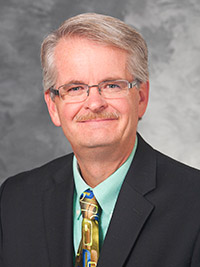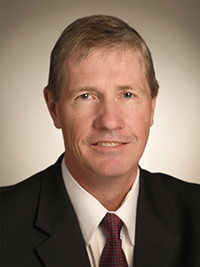Reducing costs to collect while improving net patient revenue
As healthcare organizations continue to navigate their financial recovery from COVID-19, what does recovery look like for hospitals and health systems — and how are revenue cycle teams responding? In this roundtable from HFMA Annual, sponsored by Ensemble Health Partners, four healthcare revenue cycle leaders share their insight on action steps that have improved performance during the pandemic. They also share their strategies for understanding their cost to collect, protecting revenue integrity and more.
What are volumes looking like in your region, and what do the trends suggest for the future?
Jana Danielson, vice president, revenue cycle, Nebraska Medicine, Omaha, Neb.: “Within Omaha and our surrounding region, our volumes, along with those of everyone else, went down with COVID-19. The majority are back to normal, and we are anticipating increases in some areas. Certainly, I think we all anticipate a significantly maintained increase in telehealth services. I’m still waiting for long-term information as to how telehealth volumes are going to look in the future. But overall, volumes have pretty much come back, with some in-person clinic visits shifting to telehealth. And so we’ve recovered in that regard, probably a little bit quicker than we anticipated.”
Robert Flannery, CPA, senior vice president, CFO, UW Health, Madison, Wis.: “Many of our volumes have returned to pre-pandemic levels. We’re seeing some positives from an operating room (OR) perspective. We don’t know if a bit of that might be backlog. We think most of that was dealt with in May or in June, but we’re still keeping an eye on OR volumes to see whether those increases will be sustained over the next six to eight weeks. We are seeing lower volumes in our emergency department (ED); there, we’re probably trailing last year’s numbers by about 10%. Our in-person visits are down, but we’ve made up for that from a telehealth standpoint. Currently, about 20% to 25% of our visits are incorporating some type of telehealth structure. We’re really trying to figure out exactly what telehealth is going to look like over the long haul. Some large national health plans have indicated that the telehealth payment policies that were in place during the public health emergency may be scaled back.”
Christy Joliff, vice president, revenue cycle enterprise, Northern Light Health, Brewer, Maine: “We are seeing things return to normal. I think the ED is the one place that is still a bit below average. We were doing a lot of telehealth, but that has really been dialed back, and patients are coming in-person, for the most part. But for those of you following the pandemic totals, the state of Maine has been relatively untouched, so while there is certainly a lot of concern about COVID-19, there are not a lot of cases. Things here are starting to reopen and get a little bit back to normal. Now, of course, our concern is that there will be another surge. What that means for the future is anybody’s guess.”
Scott Johnson, FHFMA, MBA, executive vice president and CFO, St. Luke’s Hospital, Chesterfield, Mo.: “Volumes have recovered to about 95% of where they were pre-COVID-19, and we’re hearing that is true of others in our market. Of course, there are some services that have recovered better than others. Patients are clearly wary of coming into the hospital, as our outpatient services and centers are much busier than our inpatient services. Our urgent care centers are quite busy again, but our EDs are still well short of historical volumes. We are uncertain what this means for the future, but suspect greater use of outpatient settings will likely continue, and telehealth will continue to be used increasingly. Both of these trends existed pre-pandemic but seem to have accelerated.
“For us, telehealth was almost nonexistent for years, although we had explored specific needs such as telestroke when we ran into a temporary shortage for stroke treatment capabilities. When the pandemic hit, our primary care doctors suddenly realized they weren’t going to see their patients in their offices, and of course, they were worried about maintaining their patient panels. We scrambled to put together a solution in a hurry, and a couple of vendors stepped up nicely to help us with that. The doctors really embraced telehealth. The bigger challenge we faced was getting patients comfortable with telehealth, because the patients don’t use this technology every day, so there was a learning curve. Today, our telehealth volumes for primary care visits are down to 10% or so, which makes me a little skeptical about the long-term implications for telehealth for primary care. It tells me that people would still rather be seen in the office. But the truth is, it’s hard to get people into the office for primary care visits because there aren’t enough primary care physicians. We’re seeing more nurse practitioners and physician extenders handle these visits.
“All of this makes me wonder: Are we seeing an increase in urgent care visits for all the right reasons or the wrong reasons? Are people using urgent care the way it was intended and decreasing unnecessary ED use, or are they using urgent care because they can’t get an appointment with their primary care physician?”
What steps have you taken to offset revenue losses and cash flow reductions from the pandemic?
Joliff: “For the most part, the steps we’ve taken to offset revenue losses and decreased cash flow have involved reductions in staff — not furloughs, but rather, not filling open positions as we experience turnover. We’ve been cross-training some folks in areas like customer service and patient registration. We did have some people volunteer to go on furlough at the start of the pandemic, but those numbers were very low.”
Flannery: “In May and June, we did have some temporary base pay reductions in place for our physicians and leadership team. We also flexed our staff in April and May when volumes were down, and when volumes started to pick back up, the flexing stopped. In revenue cycle, we’ve done a good job of making sure that the services that are being provided are being captured and that we have the appropriate documentation so that we can get paid appropriately for the services that have been delivered to patients. We’re also looking at denials and making sure that we’re not sacrificing revenue we are entitled to.”
Danielson: “We did forego market and merit adjustments, which would normally occur in July, and we’ve certainly had a lot of conversations around what capital spend is going to look like based on what we have available to spend. Certainly from a revenue cycle perspective, we had specific teams that were focused on ensuring revenue capture processes were in place for all of the changes that came with COVID-19 — collection codes and all of those types of things — so we did not miss out on any opportunities to ensure proper revenue was coming in. We have an audit process and a mechanism where providers see their individual information on a monthly basis, and we’ve used that method to communicate changes as they are occurring or pertinent information. And we keep an eye on denials, which is something we’ve always looked at, protecting net revenue that is coming in the door and making sure there isn’t any unnecessary leakage.”
Johnson: “We’re very proud that St. Luke’s has never had layoffs, and we didn’t during COVID — we staffed to our volumes, and we found that we needed more employees in certain areas, such as to screen at our entrances — but, you know, April was downright scary. It was frightening as we put projections together. We didn’t know when or if we were going to come out of that financial distress. It was comforting to see the Fed respond very quickly with the stimulus. Now, we’re going to have to reconcile that and see if we actually deserve to keep all of those funds. I think a lot of hospitals won’t, because the recovery has been pretty good going into June and July, and of course we shouldn’t have money that we aren’t entitled to from a safety and stability standpoint. But now we are heading into a resurgence of COVID, so who knows.”
Kevin Thornberg, senior director, client partnerships, Ensemble Health Partners: “I was curious: Does anyone have an example of an innovation or process improvement that the pandemic forced your organization to consider or accelerate, given that the slowdown in volume has provided you the opportunity to focus on things that may provide benefits post-pandemic?”
Johnson: “When elective surgeries began to start back up, we launched an online scheduling tool that has helped us schedule patients more quickly and accommodate more patients while still maintaining social distancing protocols. It’s a tool that has been very successful for us, not just in scheduling surgeries, but also in scheduling rehabilitation after surgery. That has been a tremendous help to us in meeting patients’ needs and in our financial recovery.”
Joliff: “We’ve been able to accelerate a work-from-home model, which we had talked about for many years. In addition to the increased productivity we’ve seen, we’ve also been able to save money on leases. I think a lot of organizations that were nervous about making the move to a remote work model and put it off because other things took precedence, and suddenly we had to figure it out, and it has gone relatively well.”
Flannery: “As someone who has worked in healthcare for 30-plus years, this whole idea of transitioning from volume to value and right care, right place, right time has really taken off during the pandemic. It has accelerated the deployment of telemedicine. Even providers who were staunchly opposed to telemedicine are embracing it faster than we would have expected. We’re having conversations with payers around telemedicine reimbursement: Should the copay for telemedicine be different than the copay for in-office care? I won’t say where we’re at with that, but from my perspective as a patient and a father of two daughters, being able to conduct a dermatology appointment with my daughter in our living room is so much more satisfying than having to drive to an appointment with my daughter, park in a parking ramp, go up or down X number of levels to the clinic, and that sort of thing, even if the copay is the same. The convenience factor is really significant. Telemedicine also has expanded our ability to provide mental health services, which were solely understaffed. To say, ‘We’re going to pay less for these visits because you don’t have the brick and mortar’ really misses the point.”
There are some disruptors that the pandemic has brought to healthcare that have enabled us to view opportunities in a different format. When you talk about ED volumes being down, do you think it’s because people don’t want to come to the ED because they are afraid of exposure?
Joliff: “We have seen volumes in our walk-in care clinics increase, and our thinking is that those are people who would have originally gone to the ED who decided against it and went to a walk-in clinic instead. Our secondary thinking is that this is probably where they really belonged all along. It makes sense that this shift has taken place because consumers are afraid to go to the ED, but I can’t say that we’ve trended that.”
Danielson: “I agree. We’re seeing the same pattern, with an increase in walk-in clinic volumes and a decrease in ED volumes, but we haven’t analyzed it to explore whether the two are correlated.”
Regarding RCM outsourcing, have you taken a single-vendor approach or a best-in-breed approach? What were the reasons behind your approach?
Danielson: “Generally, we do like to stick to a single-vendor approach. There is not a lot that we outsource from a true operational perspective. Our partnerships are generally around exploring ways to prevent revenue leakage, and our standard operational processes, such as patient access, HIM and PFS, are maintained internally. That’s not to say we wouldn’t look for a best-in-breed solution if our needs were to change, but this set up is what we currently have in place from a vendor perspective.”
Johnson: “We try diligently to make full use of our integrated systems and the tools they have built in. Where we need to outsource, we generally will use the best vendor available for the service or tool needed, usually for basic functionalities that the EHR and billing systems don’t typically provide, such as bad debt, claim scrubber and coding. The vendors are so specialized these days, it is often difficult to find one that can meet most of our unique revenue cycle challenges. We have looked at several vendors associated with revenue cycle automation, mostly to stay up-to-date with what is being offered in this space for hospitals. We recently worked with a vendor for low-dollar insurance balances but that was for a very limited engagement. Other vendors in our community have discussed their patient financing options with us, but St. Luke’s interest-free payment plans work quite well so there really hasn’t been a need to outsource these.”
Joliff: “The vendors that Northern Light uses were here when I got here. I have looked at adding a few on the back end — more auditing types of vendors, looking at zero-dollar accounts, reviewing for missed insurance to see if we still have opportunities to collect on insurance that we didn’t know about, that sort of thing. Historically, my modus operandi has been to bring things in internally wherever possible and to use small-balance vendors or early out vendors on occasion. I tend to rely on the vendors I’ve worked with before and that I know did a good job for me.”
Flannery: “Much of our work is done in-house, but we do work with some vendors, such as a zero-balance-type vendor and vendors that can supplement our staff in areas such as prior authorization when we’re getting behind. We tend to use a vendor instead of staffing up in situations such as that. We network with others: ‘You seem to be doing well in this space. Who do you use?’ And we make decisions based on whether the vendor has been a good partner for an organization that we are familiar with, even if the vendor isn’t necessarily best-in-breed.”
Do you include factors such as full benefits, administrative overhead, depreciation, patient accounting software, IT infrastructure and support in your calculation of total cost to collect? Why or why not?
Danielson: “All of the above. I calculate the total cost to collect; I include the software and I exclude it to see, from a technology perspective, what the difference is. This helps me keep a pulse on both sides.”
Joliff: “Northern Light doesn’t have a cost-to-collect calculation. That is on my list of things to try to accomplish in the next year. In my last position, I was never really able to get a cost-to-collect figure that I could benchmark against. We calculated one based strictly on the folks who reported through the revenue cycle vice president, which did not even include HIM. As a result, our calculation was very much an internal calculation that we use to determine whether we are improving.”
Thornberg: “It is Ensemble’s honor to work with health systems in the best of times and stand by their side in the worst of times. We appreciate the discussion and the insights here. New challenges and old challenges complicate today’s landscape. We are happy to continue to share information, expertise and insights around revenue cycle to help those in healthcare do what they do best.”
HFMA Roundtable Participants




About Ensemble Health Partners
Ensemble Health Partners is a leading innovator in revenue cycle management, helping health care providers improve financial outcomes and patient experiences with an unrivaled depth of expertise and best-in-class technologies. Ensemble offers full revenue cycle outsourcing as well as a comprehensive suite of health care financial management point solutions. With clients spanning the U.S. and Europe, we have been helping to improve health care outcomes for millions of patients while saving hundreds of millions of dollars for health care providers. We are committed to bringing every provider that we support to the peak of revenue cycle excellence. Our approach forges true partnerships that dive deep into the details to find solutions and deliver results that last. Recognized with multiple industry awards and as a Becker’s Healthcare Top Workplace, Ensemble is setting a new standard for provider support services – redefining the possible in health care by empowering people to be the difference. For more information, visit www.EnsembleHP.com.
This published piece is provided solely for informational purposes. HFMA does not endorse the published material or warrant or guarantee its accuracy. The statements and opinions by participants are those of the participants and not those of HFMA. References to commercial manufacturers, vendors, products, or services that may appear do not constitute endorsements by HFMA.






